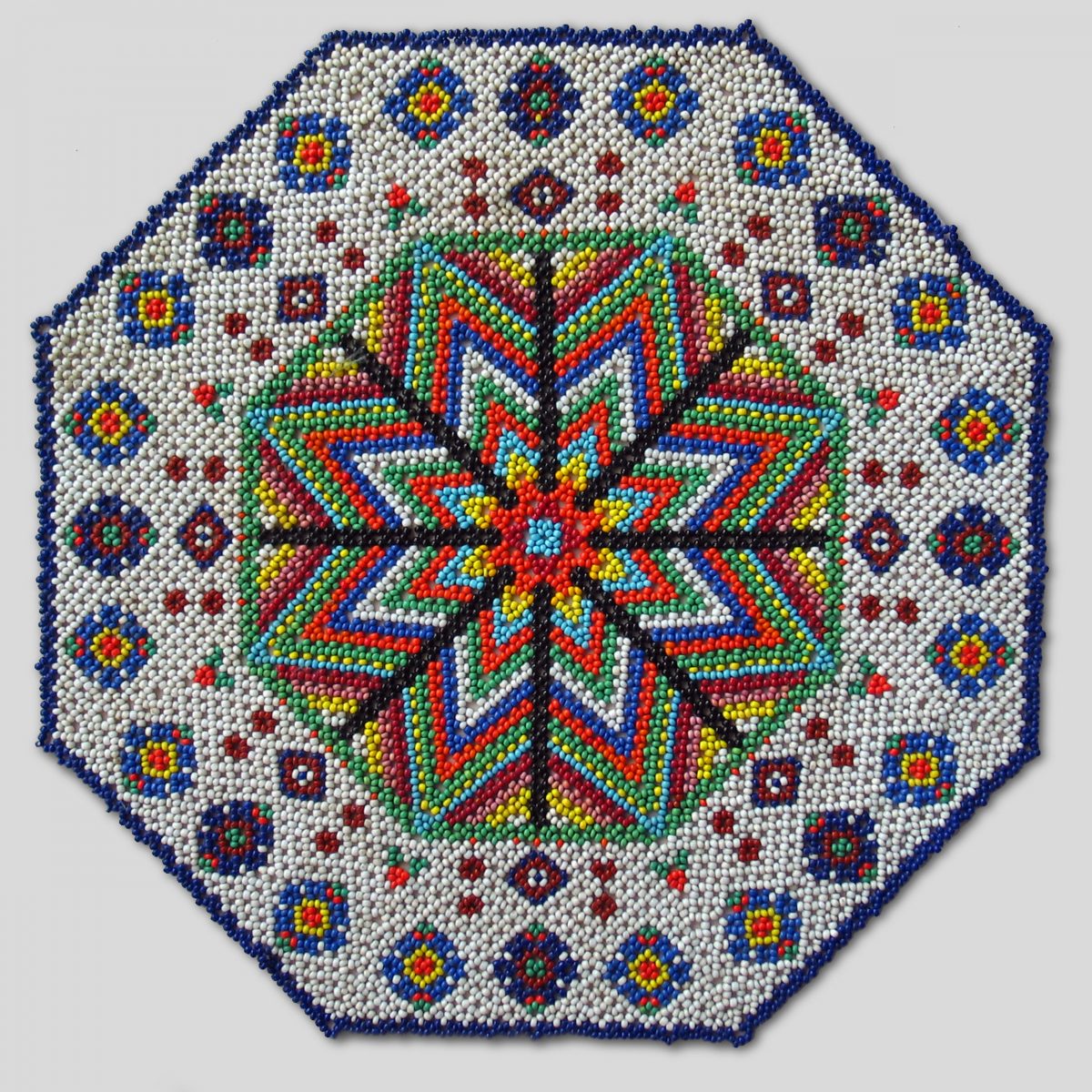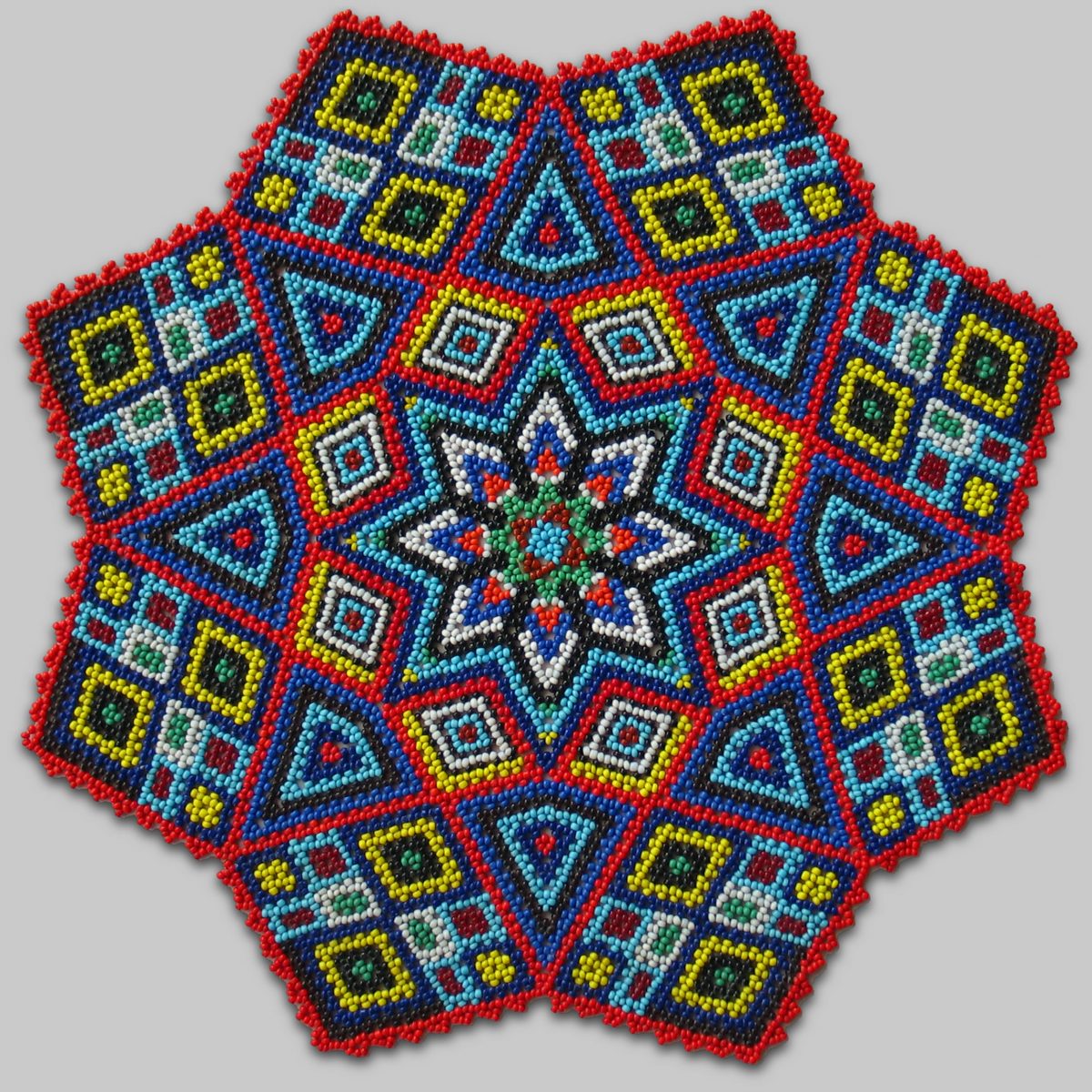I have never understood how it is that a culture who live in a largely desolate environment often completely devoid of color would create such colorful, complex geometric patterns in their art.
I bought these beaded items from an Inuit woman in Greenland in 1986. My recollection is that I paid five dollars a piece for them. I wish I had been able to ask her how long it took her to make them.
The first piece (on the left) has a single bead which appears to be out of place. This is most certainly not a mistake – more likely the artist’s unique “signature”. Can you find it? (Hint: The bead can only be seen on the full-size view.)


I don’t believe the the misplaced bead is the artist’s signature… I can’t remember precisely what it represents, off the top of my head, but I think it has to do with throwing off evil spirits or something of the like. If I remember or find the information, I’ll let you know. There are a number of American Indian Tribes that do this or similar. Happy belated Aniversary! Cindy
That’s very interesting, Cindy. Let me know if you figure it out.
Congratulations to Randy Kincaid. He was the first to find the bead.
I still can’t find it! Where it be?
It’s here.
I have been trying to find that bead.. No luck
lol.
-Angie
Dear friend,
Thoughtful, sensitive site.
I was in Thule March 1972-March 1973, as a weatherman in the USAF.
I’m searching for someone who might know of a freshwater version of a horseshoe crab that was collected at a pond or small lake (base water supply?) near the base. While I was there I saw a specimen exactly like ones I had observed in Massachusetts, except this was about 2 to 2-1/2 inches long, as opposed to the 1 or 2 foot New Englanders.
However, such a beast is not known to exist in the scientific community. The ones known are not that small, and are all seawater varieties.
The one in Thule was on an officer’s desk, and someone had said it was from a freshwater pond nearby. I tried to dredge one of the bottom of a pond, after digging through 18 inches of ice, but with no luck. Finding one in the off-season wasn’t working.
If you can point me to anyone in the Innuit community that may know of such a thing, it would be quite a find.
I can email you a picture of a seagoing horseshoe crab, if needed. They’re not like other crabs, but are much more like a fossil trilobite.
Sincere thanks,
Peter Fisk
I wish I had seen this crab, but know nothing of it.
The bead that is out of place is often called the Spirit Bead. Many native tribes believe that the maker of the designs puts part of their soul into each piece of artwork. This Spirit bead then allows the peice of the soul to escape and go back to the beader.
also called Buddha’s Eye. An intentional mistake recognizing imperfection and its beauty. In painting, it can be a spot of paint that doesn’t belong.
As a Greenlandic person, I can assure you that the bead is a mistake. We don’t use spirit beads nor leaves signature (I don’t even know how that’ll work). So why wasn’t it corrected? If you find that bead when you get to it in the next row, you have to remove 240+ beads that goes through 80? holes. *When you have done that, you pick up a bead with a needle. And again. And again. Then you go through a bead.* The time it takes to do the task is roughly the same time it takes for you to pronounce the words between the asterisks. Repeat that 80 times. Please, notice that the amount of beads increases as you go. I hope you got your answer.